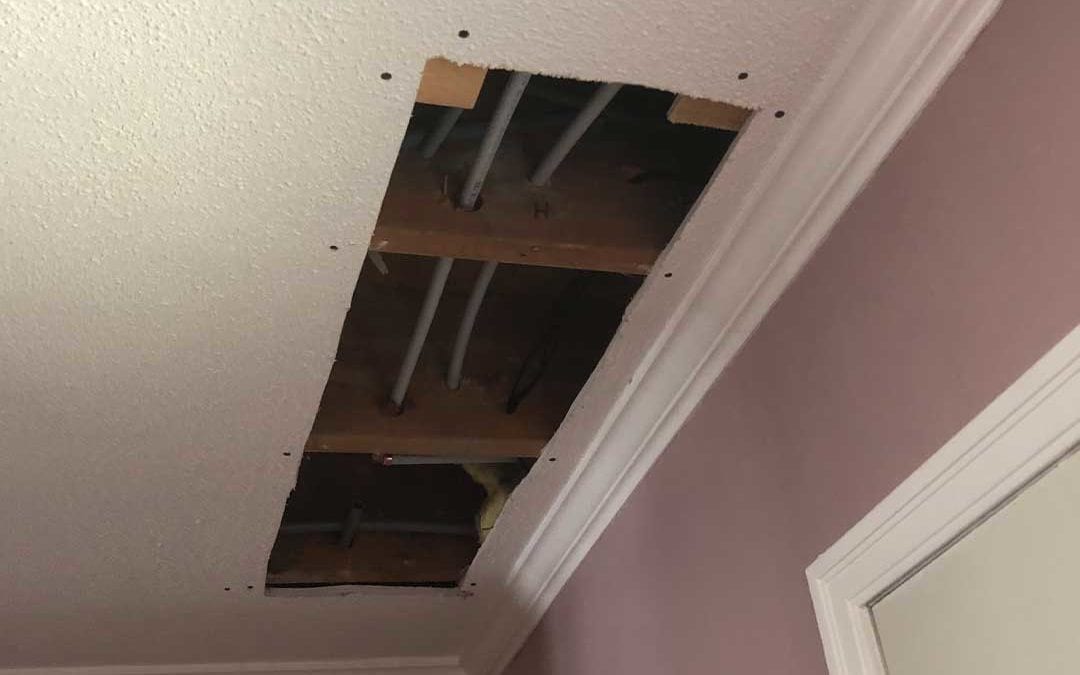Need Repair in The Great Vancouver Abbotsford Areas – Contact Us >
As a highly skilled professional in the drywall industry, I’ve encountered a wide array of challenges and scenarios over the years. One common issue that homeowners face is the need to repair damaged or aging drywall without the necessity of a full replacement. In this comprehensive article, I’ll share my insights on repairing old and water-damaged drywall, discuss popular drywall textures, provide cost-related information on drywall sheets in British Columbia, drywaller charges in Canada, and explore where drywallers earn the most money. Let’s delve into the world of drywall repair and maintenance.
- Repairing Old Drywall: A Skilled Approach
Old drywall, while still structurally sound, can become an eyesore due to wear and tear. Before embarking on a repair project, assess the damage. Small cracks, holes, or minor imperfections can often be fixed with patching compounds or joint compound, which are readily available at hardware stores. Here’s a step-by-step guide:
a. Clean the area: Remove any loose debris or dust around the damaged section. b. Apply joint compound: Fill the cracks or holes with joint compound using a putty knife. c. Feathering: Feather the edges of the compound to blend seamlessly with the existing drywall. d. Sand and prime: After the compound dries, sand it smooth and apply primer before painting.
- Repairing Water-Damaged Drywall: Addressing the Issue
Water damage is a common problem, especially in areas prone to leaks or flooding. Repairing water-damaged drywall requires a different approach:
a. Identify the source: First, fix the source of the water problem to prevent further damage. b. Cut out damaged sections: Remove the compromised drywall and ensure the area is completely dry. c. Replace with new drywall: Patch the area with a new drywall piece, securing it in place. d. Tape, mud, and finish: Apply joint tape, mud, and finish to seamlessly blend the new with the old. e. Prime and paint: Finish the job with primer and paint to match the existing wall.
- Popular Drywall Textures: Aesthetic Choices
Drywall textures can significantly impact the look and feel of a room. Popular options include:
a. Orange Peel: A slightly bumpy texture that diffuses light and hides imperfections. b. Knockdown: Achieved by spraying on texture and then “knocking down” the peaks with a trowel. c. Popcorn: Known for its acoustic properties but often considered outdated. d. Smooth: A sleek, polished finish that suits modern aesthetics.
Selecting the right texture can enhance the overall appeal of your space while also considering its practicality and maintenance.
- Cost of Drywall Sheets in British Columbia
The cost of drywall sheets can vary depending on the type and quality. As of my last knowledge update in September 2021, the average price for a standard 4×8-foot sheet of 1/2-inch drywall in British Columbia ranged from $10 to $15 CAD per sheet. Prices may have fluctuated since then, so it’s advisable to check with local suppliers for the most up-to-date pricing.
- Drywaller Charges in Canada: What to Expect
Drywaller charges in Canada vary based on location, complexity of the job, and the professional’s experience. As of 2021, you can expect to pay anywhere from $30 to $60 CAD per hour for drywall installation and repair services. Complex projects, such as ceiling work or textured finishes, may cost more. Always obtain multiple quotes and check references before hiring a drywaller.
- Cost to Drywall a Ceiling in Canada
Ceiling drywall installation can be more labor-intensive than walls due to the overhead work involved. As of 2021, the cost to drywall a ceiling in Canada ranged from $2 to $4 CAD per square foot, depending on factors like ceiling height, complexity, and location. Be sure to get accurate estimates from local professionals for your specific project.
- Where Do Drywallers Earn the Most Money?
Drywallers’ earnings can vary significantly across Canada. In general, drywallers tend to earn higher incomes in major metropolitan areas where construction activity is robust. Cities like Toronto, Vancouver, and Calgary typically offer higher wages for skilled tradespeople, including drywallers. However, the cost of living in these cities is also higher, so it’s essential to consider the overall financial picture when choosing where to work.
Conclusion
Mastering the art of drywall repair and maintenance is crucial for any skilled professional in the industry. Whether you’re tackling old, damaged drywall, exploring popular textures, or considering the cost implications of drywall sheets and labor charges, being well-informed will help you make the best decisions for your project. Always remember to hire experienced drywallers for complex tasks, and don’t hesitate to seek multiple quotes for cost-effective solutions.





